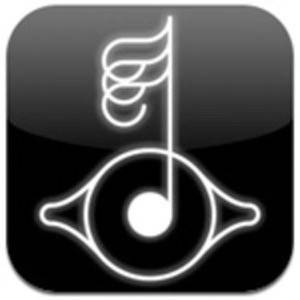Icelandic musician Björk recently released what she claims to be the world’s “first app album.” It’s an iPad and iPhone app featuring 10 songs, each song accompanied by an interactive app. The “mother” app is called Biophilia, which is the name of the album. That is available free on iTunes, but the ‘song’ apps then cost $1.99 each and are bought from within the main app. The first song, ‘Cosmogony,’ is included free. So far two other songs have been released: the first single ‘Crystalline’ and a song called ‘Virus.’

I checked out Biophilia this evening, depositing $3.98 into Björk’s App Store account for the first two paid songs. I’m a fan of Björk already and have a number of her earlier albums. Other than the music, what impresses me about this album is her inventiveness in coming up with a brand new album format – the “app album.” Plus she finds a new way to make money from her music. Both are achievements in a music era where albums and revenue have been under attack due to the Internet.
Biophilia goes all out to capture your attention once you open the mother app. David Attenborough narrates the introduction, as a 3D cosmos floats on the iPad screen. “In Biophilia,” he intones in his familiar scholarly voice, “you will experience how the three come together: nature, music, technology. Listen, learn, and create.”
The first app, Crystalline, is a kind of game where you navigate through space collecting crystals as the song plays. There’s a delightful artistic tie-in between the music, the concept of the song, lyrics, visuals and the interactivity of the app.
The introduction puts it this way: “In ‘Crystalline’ Björk explores spatial and structural similarities in crystals and music, using them to express changes between closed and open emotional states, the effort to connect with other people and unite internal and external worlds.”

In addition, there’s a lovely video that syncs the structure of the music with circular visualizations.

The second song, Virus, also features an interactive app. There is an “instrument mode” too, where touching the images produces sounds from different instruments. In effect, you create your own song from the instruments Björk uses in ‘Virus.’

Indeed, Björk actually used the iPad to create many of the music sounds on this album.
If you’d like to read more about Biophilia, Laura Sterritt from the “transmedia + music” blog Transchordian has an in-depth review. Also see The Guardian’s pros and cons analysis. Finally, the Wikipedia entry is very informative. But really, if you’re an iPad or iPhone user then I recommend you just download the mother app for Biophilia and at least experience the free song.
Biophilia is a brilliant concept for an album and I look forward to downloading the seven songs to come. Probably also the full album MP3 when it arrives later. In an age where musicians are having to find new ways to release their music and make money from it, I applaud Björk’s willingness to play with the latest web technology and use it as an artistic tool.
Tell us what you think of Biophilia in the comments below, along with your thoughts on whether the “app album” as a concept has a promising future.

















